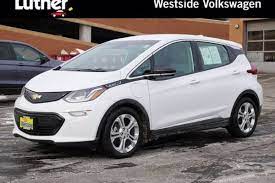|
By Wendy Ponte
Board Member | Minneapolis Climate Action Here at Minneapolis Climate Action, we stand with the Ukrainian people and deplore the destruction that Russia has inflicted upon them. The loss of lives and homes is unfathomable. At this writing, over ten million Ukrainians have become refugees. The horror of what is happening right now is so intense that most of us don’t even have the capacity to understand the impact that this war will have on our environment. There is a terrible loss of life occurring every day in Ukraine — but how many lives may be lost in the future due to the climate damage and pollution that war causes? Below is just a short list of the environmental damage that extreme military activity creates. Read on to the end to find out about an additional climate threat that comes from our very own country that is directly related to the war in Ukraine. What war does to harm our planet:
It’s so easy for us to blame an outside entity, such as Russia, for the climate damage that this war is creating. Unfortunately, though, there is a climate threat right here in the United States that is a direct result of the war in Ukraine. Within hours of the attack on Ukraine, the American Petroleum Institute, who represent all the major oil and gas companies in this country, began to ask for deregulation right now. Their claim: they can save the day and provide fuel to Europe and other countries whose sources are being taken away by sanctions. Find out more about that by watching the short video, U.S. Oil & Gas Companies Trying to Profit From War in Ukraine. When Ukrainians are finally able to return home (those that can), they will not only have to cope with what military conflict has done to their homeland, but also the health hazards that are sure to follow. But unfortunately, the climate damage created by this war will also affect you and me, and everyone else on the planet, in the years ahead.
0 Comments
by Fred Mayer Board Member | Minneapolis Climate Action  Here's my conclusion after three years as an EV owner: If you're a two-car family, like many are, your next car should be an electric vehicle. Now I know what many of you are thinking. How pretentious to suggest that everyone can afford an EV! But allow me to explain. If you already own a gas-powered car (an ICE to those who drive EVs — short for Internal Combustion Engine) you can actually save a significant amount of money by going electric. How? By buying a USED electric vehicle. Used EVs are a bargain! Currently, electric vehicles lose value much faster than their ICE counterparts. After three years of use, a typical gas-powered car retains 60% of its purchase price; but most EVs recoup much less. Why is that, and why is that good for you? Battery technology and efficiency just keeps improving, which means longer range and better performance every year. This means that those who can afford the newest EV models hold out for the next leap forward in battery technology, and slightly older models with shorter range are less in demand. That results in some amazing deals on EVs just a few years old. And one big positive of the shorter-range models is that their first owners put fewer miles on them, so not only do you pay less, but you get a car that feels and drives like it's brand new. Following your purchase of a used EV, things only get better. Electric vehicles have far fewer parts, which means fewer things to break or wear out and replace. All of this results in a significantly lower total cost of ownership. Take a look at the data:
Don’t just take it from me. A Consumer Reports study found that the average electric vehicle driver will spend 60 percent less to power the car, truck or S.U.V. and half as much on repairs and maintenance.  Range anxiety? Forget about it! I'll admit it. Range anxiety is a real thing. It stinks to run out of electricity, just like it does to run out of gas. On top of that, you can’t just grab a can of electricity if you lose your charge. That said, charging stations are growing like weeds around the metro area and you’re never far from one. And this highlights the central argument of this post: If you’re a two-car family, why not save money by buying a used EV for your primary vehicle around town, and use your gas vehicle for longer road trips? My car is a 7-year-old EV with only 60-80 miles of range, which works perfectly in town. When I need to drive longer distances, my partner and I swap cars and she takes the EV. Range anxiety solved. I know several families that purchased low-end used electric cars as second cars, and everyone in the family fights over who gets to drive it. Which leads us to …  The joy of driving I’m an avid cyclist and prefer to bike whenever possible — year round. Still, I have to say that driving an electric vehicle is a real joy, and you don’t need to buy a Tesla to get this experience. You’d be surprised at just how peppy a Nissan Leaf is. EVs offer instant torque and outstanding performance. My car is not a Tesla but it does 0-30 faster than most so-called muscle cars. Even though I’m a bike guy I love smoking the typical gas-guzzling sports car off the line (only up to the speed limit, of course!). EV drivers come to love the immediate response that's only possible from an electric motor. It produces instant power using no gears or transmission. Try it once and I think you’ll be hooked. The source of your electricity matters, but … A common argument made by EV naysayers is that electric vehicles actually pollute more than gas-powered ones, because they’re often charged with electricity from coal-fired power plants. It’s an interesting argument (typically coming from people who are perfectly happy to use coal-fired electricity) but it’s wrong. Very few places in the US still get all or even most of their electricity from coal — but even in those places that do, it's better for the environment to drive an electric vehicle! A team of researchers from England and the Netherlands found that EVs charged by coal-fired power stations still produce fewer emissions overall than internal combustion engine (ICE) vehicles. In most places — not just in the US but around the world — EVs produce 30-70% fewer emissions over the life of the vehicle. Even so, why not save even more money (and emissions) by choosing 100% renewable energy? I, for one, subscribe to a Community Solar Garden and get 100% of my electricity from solar energy. The amazing thing is that it doesn't just feel good to support renewable energy and dramatically reduce your carbon footprint … it saves you money. I’ve been saving hundreds of dollars a year by choosing solar. Learn how you can join a solar garden yourself here! So, why not save yourself some money and save the environment? Make your next vehicle a used EV ... and go solar while you’re at it! If you have any questions about making the transition to an electric vehicle, please email me at [email protected]. By Autumn SaignThe mission statement behind our community solar work is “clean and equitable energy for all,” but it’s more than just a catchy motto. Distributed and renewable energy systems, such as community solar gardens, are one of the (many) stepping stones towards energy equity and environmental justice.
Energy isn’t Neutral The United States’ energy system is highly reliant on fossil fuels. These practices accelerate climate change, perpetuate environmental injustice, and contribute to financial and racial disparities. The negative impacts of fossil fuels are unequally distributed throughout the nation. Polluting facilities, such as coal plants, are more likely to be situated in or near minority communities due to patterns of systemic racism and housing segregation. Because of this exposure to pollution, people of color experience significantly worse health conditions and are at greater risk for premature death. In addition to being environmentally hazardous, energy in the US is expensive. One in three American families face energy insecurity, meaning that they struggle to pay their energy bills and/or face challenges keeping their homes at appropriate temperatures. Energy insecurity disproportionately impacts communities of color across the country. For example, black households encounter a median energy cost burden that is about 60% greater than white households. A Cleaner, More Equitable Future Energy is an issue of equity because the allocation of affordable and clean energy, along with the pollution caused by fossil fuels, varies significantly according to race and class. Renewable energy initiatives pose the potential to lessen energy burdens while also protecting the environment. Ironically, these approaches have remained widely inaccessible to the people who need them the most due to participation barriers such as income and homeownership requirements. Community solar gardens (CSGs) can be designed to dismantle these participation barriers by providing clean and cheap energy to people regardless of their incomes or whether they rent or own. A CSG is an array of solar panels installed on the roof of a local building whose electricity is shared by more than one property. This system provides solar energy for groups that would typically be excluded from it, such as renters. In addition to inclusivity, CSGs can confront energy insecurity by lowering utility bills. Solar technology has become increasingly more efficient and affordable over the past decade. Solar energy is one of the cheapest energy sources because of the minimal extraction costs (sunshine is free!) and the overall cost of solar has decreased by ~90% over the past decade. CSG subscribers can save money on energy costs while also participating in renewable energy initiatives. The adoption of distributed community solar will make renewable energy more accessible and electricity more affordable, all while fighting climate change and promoting environmental justice. Solar energy is tied to environmental justice because it lowers pollution, which is the most abundant in communities of color, by displacing fossil fuel combustion. Another component of environmental justice is assuring that people of color, who are often excluded from the environmental industry, are represented in the fields. CSG developments can be intersectionally equitable by hiring local and minority workers and pursuing partners that do the same. Fossil fuel energy extraction hurts people as well as the planet, and the most vulnerable groups experience the effects of global warming and pollution the most severely. Environmental injustice and climate change are vast, complex problems that demand diverse and innovative solutions. Community solar gardens are a triple threat, encompassing affordability, accessibility, and sustainability. These developments combat environmental degradation and social disparities simultaneously. Community solar gardens won’t solve everything, but they’re a notable step in the right direction towards resilient, sustainable cities. |
AuthorChris Torres Archives
December 2023
Categories |


 RSS Feed
RSS Feed
